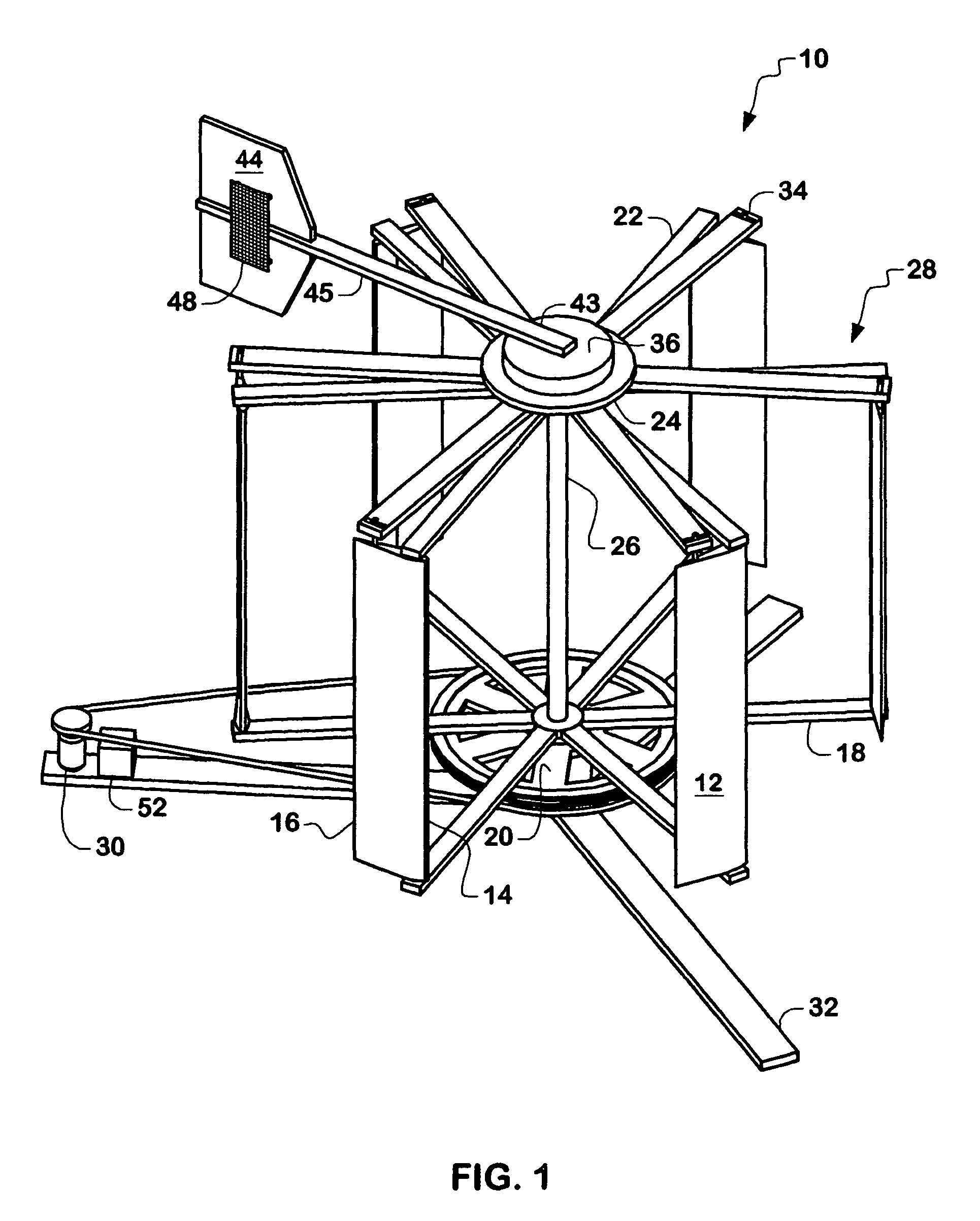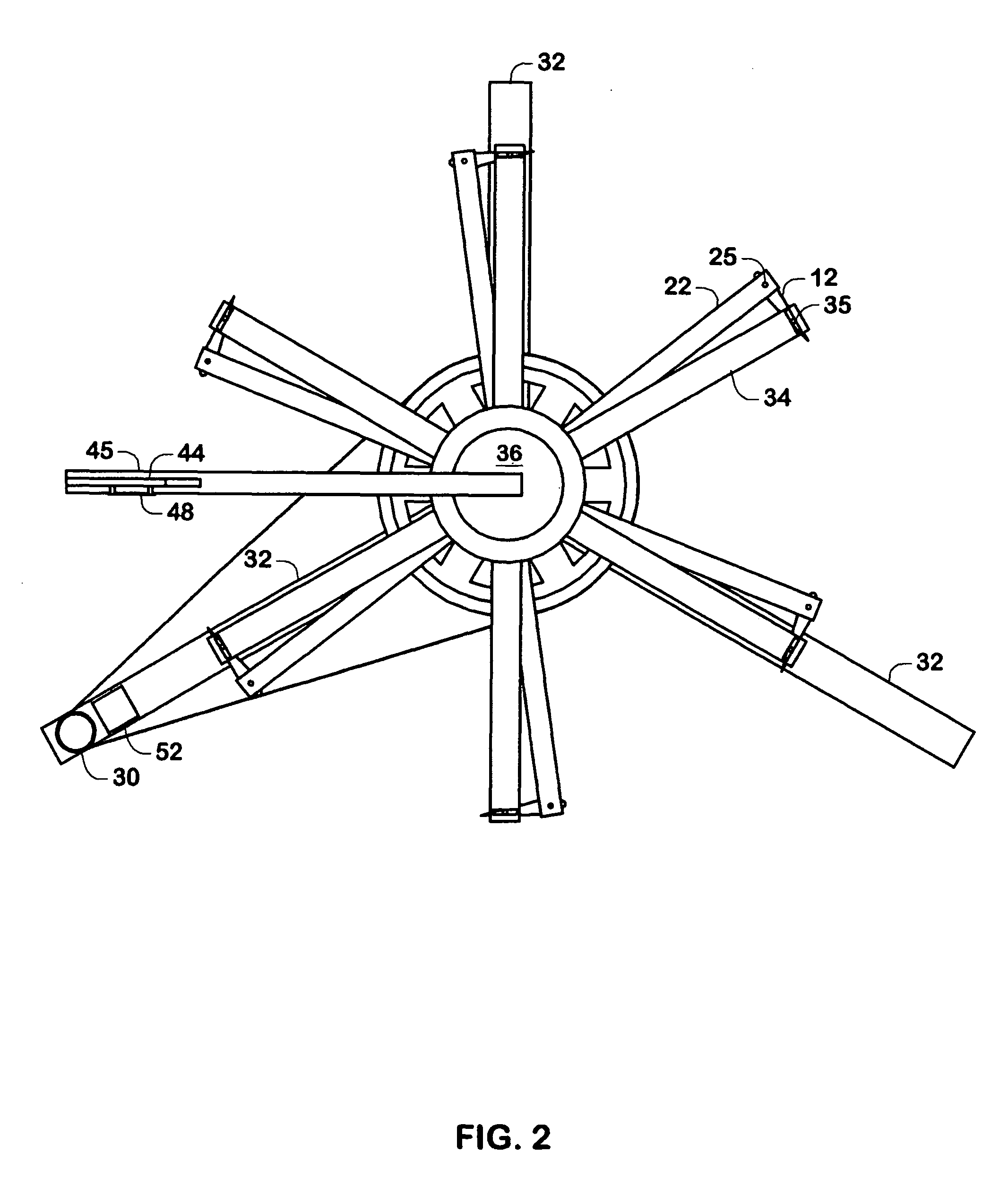Wind turbine with adjustable airfoils
a technology of wind turbines and airfoils, which is applied in the direction of rotors, greenhouse gas reduction, vessel construction, etc., can solve the problems of affecting the power generation ability of wind turbines, affecting the efficiency of wind turbines, so as to achieve robust and durable effects
- Summary
- Abstract
- Description
- Claims
- Application Information
AI Technical Summary
Benefits of technology
Problems solved by technology
Method used
Image
Examples
Embodiment Construction
As seen by referring to FIGS. 1 and 2, the wind turbine of the present invention is shown and generally referred to by the numeral 10. Turbine 10 includes a plurality of vertically extending airfoils 12 each having a leading edge 14 and a trailing edge 16. Each airfoil 12 is pivotally secured at its leading edge 14 on a bottom end thereof to spoke arms 18 extending from a lower central hub 20. The top ends of airfoils 12 are also pivotally secured at top ends thereof to the same point there along at the leading edge 14 to the ends of upper spoke arms 22 extending from an upper central hub 24. Specifically as seen in FIG. 3, each arm spoke 22 includes a hole 23 for insertion therein of a pin 25 extending from its corresponding airfoil 12 to provide for the stated pivotal connection there between. Additionally, a spring return mechanism includes a spring 27 extending around pin 25 and retained on one end thereof in a hole 27a of arm 22 and a hole 27b of airfoil 12.
A central vertically...
PUM
 Login to View More
Login to View More Abstract
Description
Claims
Application Information
 Login to View More
Login to View More - R&D
- Intellectual Property
- Life Sciences
- Materials
- Tech Scout
- Unparalleled Data Quality
- Higher Quality Content
- 60% Fewer Hallucinations
Browse by: Latest US Patents, China's latest patents, Technical Efficacy Thesaurus, Application Domain, Technology Topic, Popular Technical Reports.
© 2025 PatSnap. All rights reserved.Legal|Privacy policy|Modern Slavery Act Transparency Statement|Sitemap|About US| Contact US: help@patsnap.com



